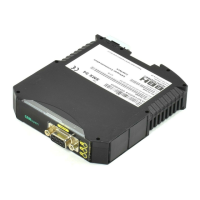
Do you have a question about the BBH SMX Series and is the answer not in the manual?
| Brand | BBH |
|---|---|
| Model | SMX Series |
| Category | Controller |
| Language | English |
Definitions, co-valid documents, and abbreviations used in the manual.
Covers intended use, UL/CSA requirements, and general safety regulations.
Guidelines for operating, servicing, transporting, and storing the devices.
Provides an overview of SMX modules, including base, expansion, and communication types.
Details characteristic data for various SMX modules, interfaces, and encoders.
Covers output derating information and device identification details.
Lists the items included and not included in the product delivery.
Describes the general design, safety-related architecture, and data.
Details safety characteristics for digital, speed/position, and analog sensors.
Covers safety characteristics for outputs, including digital and relay types.
Provides general installation guidelines, IP protection, and EMC considerations.
Instructions for installing modules and setting up the backplane bus system.
Details terminal assignments for various SMX modules and their connections.
Information on external 24 VDC voltage supply and fuse requirements.
Covers encoder supply, resolvers, proximity switches, and interface assignments.
Details encoder supply voltages and their monitoring.
Explains the assignment of encoder interfaces for various types.
Lists response times for functions in standard operating modes.
Details response times for FAST_CHANNEL and fault distance monitoring.
Describes reaction times for inputs and outputs on expansion modules.
Covers startup procedure, making sequences, and LED status indicators.
Details parameterization, functional testing, and validation processes.
Details the process of risk assessment and safety examination.
Guidelines for modifying devices and exchanging modules.
Specifies intervals for module replacement and function tests.
Details environmental conditions and safety-related characteristic data.
Describes the process of risk assessment for safety applications.
Lists the technical documents required for safety applications.
Outlines the necessary steps for designing, realizing, and testing safety functions.
Specifies safety requirements and structural schematics.
Defines safety functions and required performance levels (PLr).
Covers software and hardware specifications for safety functions.
Details hard and software design, testing, and iterative safety level assessment.
Describes software verification, parameter checking, and system tests (FIT).
Classifies different switch types according to PI and SIL standards.
Provides the EU Declaration of Conformity for Safety Components.